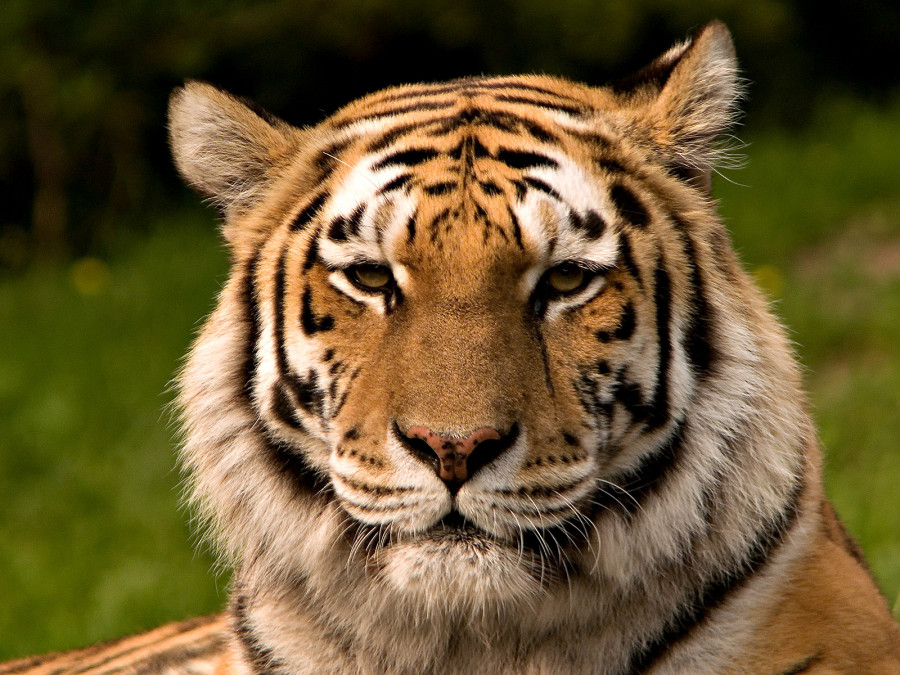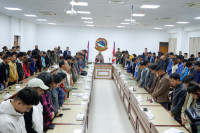Opinion
Revisiting the wildlife farming policy
The new proposed policy enactment could facilitate wildlife trade business
Biraj Shrestha
Wildlife farming, as opposed to breeding centres for reintroduction or ex-situ conservation, comes at a price of increased wildlife trade, while putting enormous pressure on wild stocks. It additionally jeopardises the achievements made by various institutions and conservationists in Nepal so far.
In 2003, the Nepali government launched a working policy on wildlife farming, breeding and research under the fifth amendment of the National Park and Wildlife Conservation Act 1973. Its mission was to promote biodiversity conservation and improve the living standards of the poor and marginalised rural communities by stimulating private sectors in wildlife farming for research and commercial use. The policy was approved in haste and without any consultation with the concerned stakeholders and institutions. As a corollary, the policy suffered wide allegations of being baseless by conservationists and animal welfare activists in Nepal.
The reasons were clear: the approved wildlife farming policy was unable to explain how it would mitigate the poverty status of poor people. The policy was also seen as merely a medium to satisfy someone’s interests to conduct business with wildlife commodities, a means of sufferance and torture for wild animals in the name of scientific research. The policy saw major public outcry in 2003 when cases of the Rhesus Macaque being exported to biomedical research labs in the US surfaced.
Following the approval of the wildlife farming policy in 2003, the Nepal Biodiversity Research Society was set up in Lalitpur, Nepal, for macaque farming. The personnel involved intended to supply a minimum of 300 wild macaques to the US-based Washington National Primate Research Centre. A memorandum between the two institutions of both countries had already been signed in 2001. Another farming facility, National Bio-medical Research Center, was opened in 2005 to export macaques to a bio-medical research station in Texas known as Southwest Foundation.
In a country like Nepal, where a majority of the population are Hindus, macaques are viewed as images of the god Hanuman. Therefore, exporting them to research labs was unacceptable. Later when horrid images of the exported monkeys’ plight in research labs circulated, it drew a huge surge of criticism with participation from animal welfare and conservation organisations, the public and Jane Goodall herself, through the Jane Goodall Institute Nepal Chapter. With unabated protests, huge petitions finally deemed the policy as baseless and repealed the enactment of policy.
Recently, the government of Nepal is expediting towards the enactment of a new policy. Echoing the wildlife farming policy 2003, the proposed policy advocates wildlife farming and breeding for meat, wildlife commodities and international trade policy 2019. It is targeted to encourage the public, co-operative and private sector investors, as included in the revised Forest Policy 2019, prepared by the Ministry of Forests and Environment. According to the policy, meat and body parts of farmed wild animals could be consumed and used as commodities legally.
The bill is yet to pass and a working committee has been set up by the Department of National Parks and Wildlife Conservation (DNPWC). The committee has proposed four classes of animals for farming, namely Mammal (Spotted Deer, Sambar Deer, Hog Deer, Barking Deer, Wild boar), Reptile (Snake and Crocodile), Amphibian (Frogs) and Birds. DNPWC shall provide the seed animal to the farm permit holders after paying stated revenues. The farm owners can make commercial use only of second generation wildlife born from the seed animal. The Convention of International Trade in Endangered Species of Wild Fauna and Flora (CITES) does not allow species in Appendix I for commercial international trade, but provides flexibility in trade if it is for scientific research purposes. In this case, both the export and import permits of a species are required between countries. The newly proposed policy is believed to relax CITES regulated Appendix I species breeding and trade for scientific research.
By definition, wildlife means any living organism untamed in nature. The very definition of wildlife suffices why farming wild animal is unethical. Their biological functioning is never adapted to controlled experimental environments leading to stress, disorder, dullness, poor physiological response and death. The meat-based industry of wildlife farming is a great danger that openly lures the public into diverting their taste from already domesticated livestock to wild animals’ product. The consequence could result in the general public developing a universal preference for wild stocks rather than farm based animals as in the case of Chinese farmed tiger products. People preferred wild tiger products in comparison to farmed ones, despite agreeing on the ban on tiger trade products to conserve them. The distinction between wild and farm based commodities are hard to explain.
Nepal acts as a transit hub for illegal wildlife trade between China and India and also as a potential source of poaching tiger skin, rhino horn, pangolin scales, bear biles, antelope fur, red panda skin, leopard hide etc. The government of Nepal, Crime Investigation Bureau, community based anti-poaching units, non-governmental organisations and individuals have since long been fighting the good fight to curb illegal wildlife trade and have substantial results to show: such as celebrating the Zero Poaching Year four times for three key species (tiger, rhino and elephant).
However, this new proposed policy enactment could facilitate the wildlife trade business and put to waste all the efforts stakeholders have put towards wildlife conservation until now. In an effort to flourish commercial wildlife farming, the policy may encourage the notion that exploiting wildlife for human utilisation is something acceptable. Policymakers must be cognisant of this.
Shrestha is currently an MS student at the University of California, Santa Cruz, for the Coastal Science and Policy Program.
He can be reached at [email protected].




 9.12°C Kathmandu
9.12°C Kathmandu










